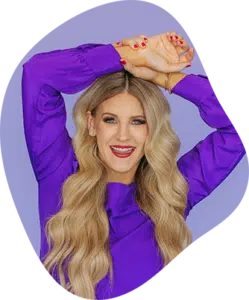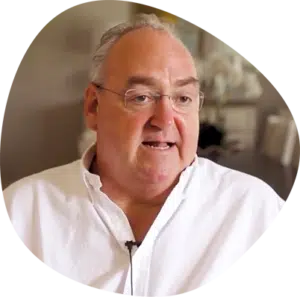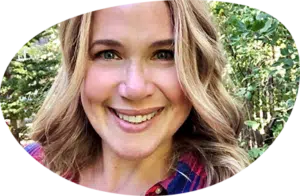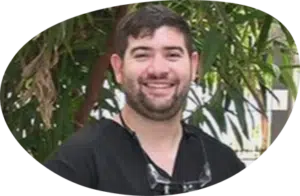GET YOUR QUESTIONS ANSWERED
FAQ: Marketing Questions You Want the Answer To
We want to make sure you are equipped to make educated decisions with your business investments. That’s why we have put together a list of questions we get from customers. We have answers to pricing, timeframe, and general practice questions.
Can’t find what you’re looking for? Contact us today and get the answers you need. We’re happy to help!
Frequently Asked Questions About Pricing:
How much does a marketing engagement cost?
The cost of a typical marketing engagement depends on: type of engagement, size of agency, regional standard pricing, level of expertise, amount of work included, etc.
The national average cost of a marketing engagement generally ranges from $2,500 to $12,000 per month and $50 to over $500 per hour for small to medium sized businesses.
Each of Glass Ivy’s marketing packages have a rate of $750/week or $3,000/month for six months. These engagements, as is, are not flexible on price. There is room to adjust services within each, but the price is consistent across the board.
Our Business Kickstarter package is a one-time fee of $7,400.00.
These costs do not include advertising budgets. Those costs are planned for, agreed upon between Glass Ivy and our clients, and added to your monthly investment.
What can I do to reduce the cost of the project?
For website projects, the only option you have to reduce costs is to reduce the scope of your website. You can reduce the number of pages, integrations, and functionality included.
For engagements that involve ads, you might be able to cut your advertising spend and still have a successful engagement.
For any other marketing engagement, there is no cutting costs. Our pricing is based on a combination of time allocated, tool integration, research, and our professional expertise.
How much should I expect to spend month to month once the initiative is up and running?
Our marketing engagements are not built to be a “one and done” project. Initially, we retool and revise your marketing foundation. Then we formulate a strategy based on research, collaboration, and our expertise. What comes next is a continually improving series of campaigns, content generation, advertising, and more.
We closely measure performance and revise and reiterate on our strategy. This is a continuous process. Each phase of a Glass Ivy engagement takes time and effort. Therefore, our rate is the same month to month.
We recommend a minimum of 6 months for marketing engagements. At that point, we are confident that you will see the results you want.
How much does a website cost?
If you are building a website on your own through a third-party, template based tool you can do this for just a couple hundred dollars.
If you are looking for something more robust that will act as an inbound lead generator, have multiple pages, include form integrations, include other integrations (like Analytics, Maps, Social Media Feeds, eCommerce Shops, Payment Processing) and have a great user experience across devices, you’re going to pay more.
In general, having an agency design and build you a website will cost from $3,000.00 to $10,000.00.
Glass Ivy includes a new custom website in our Business-Kickstarter package (priced at $7,4000.00). For a stand alone website project we typically start at $5,000.00.
What is the ROI on PPC ads?
Return on investment for Pay per Click (PPC) advertising varies. The factors with the most influence on effectiveness include: platform used, demographic information incorporated, ad format, budget, industry, and level of competition for the target audience.
The average ROI is 200-300% which translates to $2-3 for every dollar spent. Some companies see much higher returns than this, but some companies see slightly lower yields. For example, Google boasts that for every dollar spent with them you’ll receive $8 in return even though this is extremely high.
Glass Ivy typically sees a minimum of 280% ROI for PPC campaigns.
What is the ROI on Social Media ads?
Return on investment for social media advertising is greatly varied. The factors with the most influence on effectiveness include: social media platform, targeting options, ad format, budget, and level of competition within the industry.
However, most researchers and surveys agree that low-end ROI is only 20-40% for social media ads whereas high-end ROI is 120-200% no matter the industry or level of expertise.
With an expert team, like Glass Ivy, we would anticipate seeing a minimum return of $2.50 earned on every $1.00 spent.
How much does PPC cost?
Pay Per Click (or PPC search engine ads) can cost as little as a few cents per click up to a few dollars per click. When setting up a PPC campaign you will set a maximum budget. Your budget can either be set by day, week, or lifetime of the campaign.
To have an effective campaign, be sure to look at industry standard rates. Different industries have a different average Cost Per Click (CPC) and different ad conversion rates.
To plan an effective budget, you can estimate a good starting point by calculating your # of Keyword Themes * Your Maximum CPC *100.
A Glass Ivy starting budget example from a client: 10 Keyword Themes * $2 * 100 = $2,000 Campaign Lifetime Budget.
Note: This budget was for a supply chain adjacent company and yielded ~1.7k website visitors, ~2.3k website sessions, had a 38.4% engagement rate, and provided an estimated 5-10 qualified sales leads.
How much do Social Media ads cost?
In short, social media ads can cost from as little as a few cents per click. There are minimums set based on platform. Most social media ads are either going to charge based on Cost Per Click (CPC), Cost Per Thousand Impressions (CPM), Cost Per View (CPV) or Cost Per Engagement (CPE).
The key with social media ads is you get what you pay for, literally. You only pay for interactions. Higher budgets = higher display rates to get more interactions.
Quality ad copy, imagery, platform evaluation, and demographic research will help you get the most bang for your buck.
Glass Ivy always starts small with ad spend and utilizes A/B testing and constant monitoring to grow effective social media ad campaigns. We aren’t going to waste your money.
We recommend our customers start out with daily spends between $5-10 and move up to daily spends between $15-50.
How much does videography cost?
The cost of videography varies depending on the length and complexity of the video, the equipment and crew required, the location and setting, and the specific needs and goals of the client.
Here are a few examples of the cost ranges for different types of videography:
- Corporate or commercial videos: a few thousand dollars (basic, one-day shoot) to tens of thousands of dollars (high-end, multi-day production).
- Event videography: a few hundred dollars for a single videographer to cover a small event, to several thousand dollars for multiple videographers and advanced equipment to cover a larger event.
- Real Estate videos: Can range from $500 to $3000+ depending on the square footage of the property, the videographer, and the options chosen.
Glass Ivy doesn’t currently offer videography, but we know some awesome people who do and would be happy to recommend!
How much does branding cost?
The national average cost of a branding engagement typically ranges from $1,000 to $10,000. This varies depending on the scope of materials included, how much research is done, how many iterations are allowed, and the level of expertise of the branding agency.
Glass Ivy includes visual identity and branding in our Business-Kickstarter package (priced at $7,4000.00).
How much does a logo cost?
Full disclosure, you can get a logo for as little as $5 on certain websites and online marketplaces. It could also be free if you DIY. However, if you want some science and custom design incorporated you’re going to pay more.
Freelance designers will typically do a logo for a few hundred to a few thousand dollars. Agencies will typically design a logo for a few thousand to $10,000.00.
These prices vary based on the amount of research, customer collaboration, level of customization, number of variations, number of iterations, level of expertise, incorporation of a test group, and deliverables.
Glass Ivy includes a new logo in our Business-Kickstarter package (priced at $7,400.00).
Can I pay money to rank higher on search engines?
It is not possible to pay for a higher ranking on search engines like Google, Bing, or Yahoo. Search engines use complex algorithms to determine the relevance and authority of a website and its pages, and these algorithms take into account over 100 factors such as content quality, relevance, inbound links, and user experience.
In short, they are designed to mimic real people and provide results based on what people want. Alternatively, if you try to pay for higher rankings or manipulate search results you’ll likely be penalized for violating search engine terms.
Frequently Asked Questions About Time & Effort:
How long will this marketing project take to complete?
Our marketing engagements are investments into your business. That’s why we have a standard 6 month timeframe as a minimum starting point. You will not see mind-blowing results within a month. You will not see a massive increase in sales within weeks.
Our goal is long-term success for your business. We are going to make sure you are set up for continued growth and increased revenue for years to come.
In order to do that effectively, we have to lay a foundation, propel growth efforts, and set you and your entity up with the tools and knowledge to succeed. It takes time, or it’s not effective.
You won’t get rich quick, but you’ll have lasting success.
How long does it take to build a website?
The time it takes to design and develop a custom website can vary greatly depending on the size and complexity of the website, the number of pages and features, the design requirements, and the level of expertise of the agency.
For a small website with a basic design and a couple pages, development time could be as little as two weeks. However, for a large and complex website with multiple features and integrations, development time could take several months or more.
This also depends on the number of iterations and changes requested by the customer and if the website is being built brand new or if the website is being redesigned from an existing site.
On average, Glass Ivy turns around a new website within a month no matter the size.
How long should I run an ad campaign for?
The length of an ad campaign depends on the goal. If the goal is to increase brand awareness and visibility you may want to do a high-budget, short timeframe ad campaign OR a low-budget, long timeframe campaign.
Alternatively, if your goal is sales as quickly as possible you will need to have a more structured budget and timeframe plan based on research into your industry and target market.
In general, ads should run a minimum of two weeks. They should not run un-adjusted or “as is” for longer than a month. A well monitored and maintained ad campaign could run for a year and be successful. It really just depends.
Frequently Asked Questions Regarding Definitions & Education:
Can you help train my existing team?
Of course! Glass Ivy is passionate about providing small businesses with the knowledge, education, and tools they need to succeed. If you partner with us, we will be extremely hands-on in this process and will train you and your team as needed.
What does SEO mean?
SEO (Search Engine Optimization) is the process of optimizing a website or web page to improve its ranking in search engine results pages (SERPs) and increase the visibility of a website or page to people making search inquiries.
This is typically done through techniques such as optimizing content and structure, link-building, and keyword research. The goal of SEO is to increase the quantity and quality of traffic to a website from search engines.
This also depends on the number of iterations and changes requested by the customer and if the website is being built brand new or if the website is being redesigned from an existing site.
On average, Glass Ivy turns around a new website within a month no matter the size.
What does SEM mean?
SEM (Search Engine Marketing) is the practice of using paid advertising on search engine result pages (SERPs) to reach potential customers and promote a website, service, brand, or product. SEM includes Pay Per Click (PPC) advertising, Cost Per Impression (CPI) advertising, and Cost Per Acquisition (CPA) advertising.
SEM campaigns are typically conducted through platforms such as Google AdWords and Bing Ads and the goal is to increase the visibility of a website and drive more traffic and sales by appearing at the top of search engine results.
What is a good click through rate on ads?
A standard click-through rate (CTR) on a digital ad can vary depending on a number of factors, including the type of ad, the platform on which it is being displayed, the targeting options used, and the industry or niche of the business.
However, as a general benchmark, the average CTR for display ads (think third-party websites) across all industries is around 0.05%. This means that for every 1,000 impressions (times the ad is shown), about 5 people will click on the ad. For Search Engine ads (think Pay Per Click) the standard CTR is often higher, it can vary from 2% to 10%, but it depends on the keyword, industry, and ad copy.
These are just averages and individual campaigns. Ad Campaigns may have a higher or lower CTR. It is important to remember that a high CTR is not the only metric to measure an ad campaign’s success as it only takes into account the number of clicks and not conversion rate, cost-per-conversion, and others.
Glass Ivy typically sees a minimum of 3% CTR across all campaigns.
What is a good click through rate on emails?
A good click-through rate (CTR) on email campaigns can vary depending on a number of factors, including the industry, the size and engagement of the email list, the quality of the email content, and the targeting options used. However, as a general benchmark, the average CTR for email campaigns across all industries is around 2-5% for email lists that are high-quality with an “opted-in” audience. This means that for every 100 emails sent, 2-5 recipients will click on a link in the email.
It’s worth noting that these averages can vary greatly across different industries, with B2C industries typically having higher CTRs than B2B. For example, a study by Campaign Monitor found that the average CTR for retail email campaigns was 4.5%, while the average CTR for B2B campaigns was only 1.7%.
It’s also important to keep in mind that Click-through rate is just one metric for measuring email campaign performance. Other important metrics to consider are open rate, bounce rate, unsubscribing rate, conversion rate, and revenue generated.
It’s recommended that you compare your email campaign’s performance against industry averages and also against your own historical data and also to segment your data and analyze each segment separately to see if there’s any room for improvement.
Glass Ivy typically sees a minimum of 4% CTR on email campaigns.
What is a good open rate on emails?
A good open rate on email campaigns can vary depending on a number of factors, including the industry, the size and engagement of the email list, the quality of the subject line and sender name, the frequency of sending emails and the targeting options used. However, as a general benchmark, the average open rate for email campaigns across all industries is around 20-30%. This means that for every 100 emails sent, 20-30 recipients will open the email.
It’s worth noting that these averages can vary greatly across different industries, with some industries such as retail, finance, and e-commerce having higher open rates than others, such as media and entertainment. For example, a study by Campaign Monitor found that the average open rate for retail email campaigns was 24.79%, while the average open rate for media and entertainment campaigns was 19.28%.
It’s also important to keep in mind that open rate is just one metric for measuring email campaign performance. Other important metrics to consider are click-through rate, bounce rate, unsubscribing rate, conversion rate, and revenue generated.
It’s recommended that you compare your email campaign’s performance against industry averages and also against your own historical data and also to segment your data and analyze each segment separately to see if there’s any room for improvement.
Glass Ivy typically sees an average open rate of 28%.
READY TO GROW?







